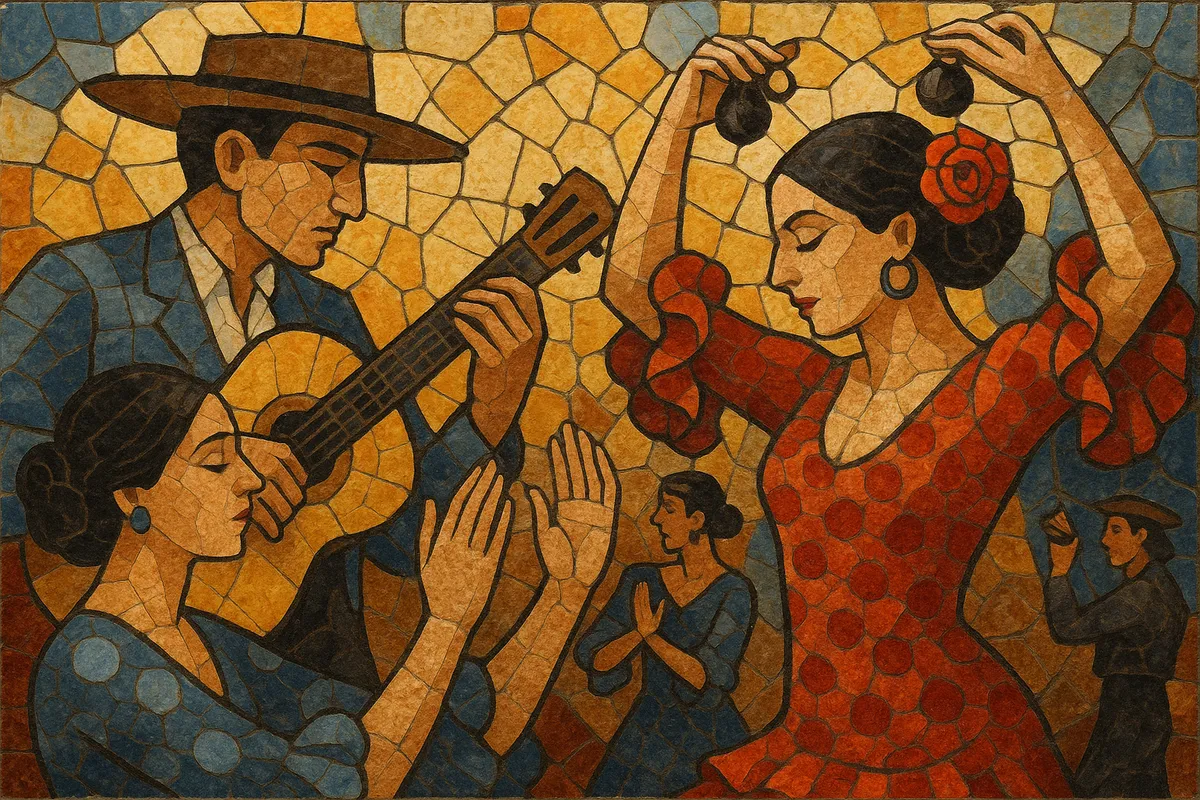Sevillanas is a lively Andalusian song-and-dance genre closely associated with Seville’s spring fair (Feria de Abril) and the pilgrimage to El Rocío. Although often performed within the broader flamenco ecosystem, sevillanas is fundamentally a festive folk style derived from the Castilian seguidilla and shaped in Andalusia.
A typical sevillanas performance consists of four short sung-and-danced sections (coplas), each with its own choreography. The music is upbeat, commonly in 3/4 with occasional hemiola feels between 3/4 and 6/8, and is accompanied by Spanish guitar, palmas (handclaps), and dancers’ castanets. Lyrics celebrate everyday life, romance, regional pride, and religious devotion, making the genre both communal and highly singable.
Sevillanas trace their roots to the Castilian seguidilla, a poetic and musical form that spread throughout Spain in the 18th and early 19th centuries. In Andalusia—particularly around Seville—the seguidilla evolved into “seguidillas sevillanas,” adopting local melodic turns, dance figures, and a brighter, more festive character. Borrowings from Andalusian folk practice and proximity to flamenco performance culture further colored its sound and staging.
By the mid-to-late 1800s, sevillanas had become a staple at regional celebrations, notably the Feria de Abril. The rise of cafés cantantes provided professionalized stages where guitarists, singers, and dancers showcased the form, helping standardize the four-copla structure and typical accompaniment (guitar, palmas, castanets). Printed songbooks and salon arrangements also spread a “boleras” dance-school influence, streamlining choreography and lyrics.
In the 20th century, commercial recordings, radio, and later television propelled sevillanas into national prominence. The genre thrived in folkloric programs and at festivals, while Sevillanas rocieras—devotional sevillanas linked to the Romería del Rocío—became especially beloved. Postwar and late-Franco-era cultural platforms elevated groups dedicated to sevillanas, establishing a robust repertoire and recognizable style.
Today, sevillanas remain central to Andalusian identity and social dance, taught in schools and academies and performed by amateurs and professionals alike. Modern productions may incorporate cajón, bass, and pop-leaning arrangements, yet the core elements—four coplas, handclaps, castanets, and a buoyant 3/4 sway—endure. The genre also interfaces with flamenco-pop and nuevo flamenco aesthetics, keeping sevillanas present in contemporary Spanish popular music.


